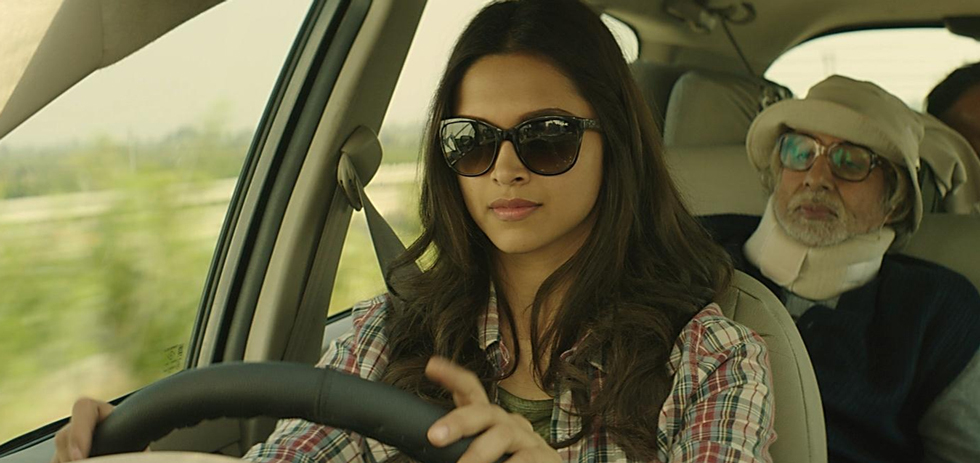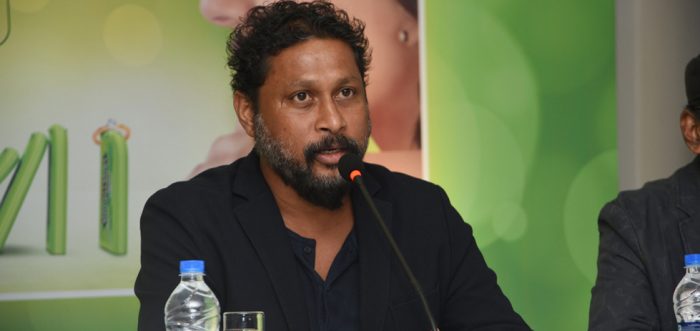Shoojit Sircar is very much at the centre of a new wave of Indian directors who have broken the mould of what has been for years considered to be the unspoken commercial Bollywood formula. His films have tackled supposedly taboo subjects for an Indian audience such as sperm donation (Vicky Donor, 2012), challenging the political status quo (Madras Café, 2013) and regressively patriarchal attitudes towards women in India (he co-wrote the 2016 film Pink). Prima facie, he makes precisely the sort of films that conventional Bollywood wisdom dictates are sure-fire mainstream box-office poison. And yet, the reality is anything but. His work has not only garnered critical acclaim but also commercial success. In a short time, he has carved a niche for himself; his work with actors like Amitabh Bachchan, Deepika Padukone and Irrfan – casting all three of them in one film (Piku, 2015) – blurring the arbitrary distinction between what is marketed as a “commercial” or an “arthouse” film within the Indian cinematic landscape.
Here to attend the Indian Film Festival of Melbourne, we caught up with him to have a quick chat about breaking conventions, the importance of place in films, and his love for perhaps one of the greatest directors of world cinema, Satyajit Ray.
You don’t make films that can be easily slotted into mainstream commercial Hindi cinema and yet you have found immense success within that space. How does it work when you approach producers to pitch your ideas – “I’m making a film involving constipation” or “I’m making a film involving sperm donation”. Is there any difficulty in selling these kinds of ideas to prospective producers to get funding on board?
Yes, with most of the films I’ve made, it’s definitely been a problem to raise money sometimes. Because it’s such a huge process in trying to explain to somebody what’s essentially in just in your head at that point. Films are a director’s medium and it’s the director’s vision that starts this whole process. To make an entire studio believe in what your vision is, it’s a tough task. In fact, that’s a tougher task than making a film actually. People say these ideas are out-of-the-box, and I say these are very common ideas which you see every day in your life. My films have been rooted in society, stemming from everyday issues, people and a reflection of the family unit that I see around me. And it’s been difficult to raise funds to share these kinds of stories. But somehow I’ve managed it.
I wanted to touch upon a sense of place in your movies. Each film of yours is rooted in a distinct sensibility of place, whether that is Madras Café, Piku or Vicky Donor. Even with the way you wrote Pink, if you take out the the urbane, upper-middle class, educated milieu out of that film, the sexual politics of that film won’t have the same kind of an impact. When Parallel Cinema was still around, this sense of place had real prominence in film narratives. But with the death of that movement and the onset of commercial Hindi cinema in the 90s and early 2000s, this sensibility somewhat went away. ‘Place’ in a sense became extrinsic to the story. With new directors such as yourself and new films like Masaan, Ankhon Dekhi and your films, we seem to be coming back and rediscovering what the role of place is in a film narrative.
I think the essence of any cinema is the milieu. And yes, you’re absolutely right, this is not like a fashion that’s ‘coming back’ in any sense, but it’s more about a way of looking at and making cinema. Where you place a film and its milieu. I’m from Delhi, and my films reflect Delhi and its sensibility. I’m also familiar with Kolkata, I know Kolkata very well so I can easily put my films amongst that milieu. A location, when you come to think of it, that’s what drives the characters.

The camera set-ups that you favour are interesting. You prefer to have everyone in the frame and often there will be competing actions occurring within the same frame. Compare that with the heavy prominence of the ‘shot-reverse shot’ style, where as a viewer you are almost fed information, you’re in a passive state. Having all your actors in one frame creates a kind of internal rhythm that I enjoy a lot. For example in Piku, with the internal car scenes, where Irrfan and Deepika are sitting in the front, and hence, are in the foreground, with Amitabh Bachchan in the backseat and the background of the same frame.
With Piku, the kind of film it was, I actually wanted my viewers to feel as if they are sitting in middle of the drawing room of this chaotic family. I just wanted them to be transported right there into the middle of the car and just feel that chaos unfolding around them. The camera also adds to that feeling that there is chaos all around – whether that be of food, of medicines, regarding the house, of people, even with the way dialogue is spoken. But at the end of the day all that adds up to make sense as that claustrophobic, chaotic sensibility.
Moving on to Madras Café, political films in Indian cinema have always been difficult, especially when they appear to challenge the status quo in some way. From Gulzar’s Aandhi to Madhur Bhandarkar’s Indu Sarkar, that’s a continuing issue. And even when films on political subjects are made, they at times tend to become hagiographies, rather than slow-burners of the kind you attempted. What challenges did you face while making Madras Café in this regard?
I’ll start with this, that in the film Madras Café, there is a dialogue by a journalist that says, “criticising your national policies does not make you anti-national.” I think that sums up my film. Yes, sometimes you do make compromises because in India we have not seen too many political films. As you rightly alluded to, there are political scenarios that always arise whenever someone tries to make films tackling such subjects. But I think we are getting there. We will make more hard-hitting political films. And in that regard, Madras Café will always be an example for me, where I was able to criticise the government’s policy through the medium of film. And I think now, because I made that film, I will be able to make other films in that space as well.
And finally, I wanted to get your thoughts on Satyajit Ray. His work has influenced your cinematic sensibility a lot. I’m a Ray tragic myself, so this is a completely selfish exercise on my part. Can you tell us a bit about your love for Ray and how that’s influenced your work?
Whenever I get a chance to watch a Ray film, wherever it is, in whichever festival, I’m there. Ray’s films have been like a bible to me. For any inspiration, if I’m stuck, in life or in filmmaking also, for anything really, I go back to Ray’s cinema. Wherever I go for sessions or talks, I tell them you must watch Ray’s films and then we’ll talk about anything else. I tell all my film students to please watch Ray. I don’t think you’ll ever face a problem in making or visualising a film if you become familiar with his cinema.
